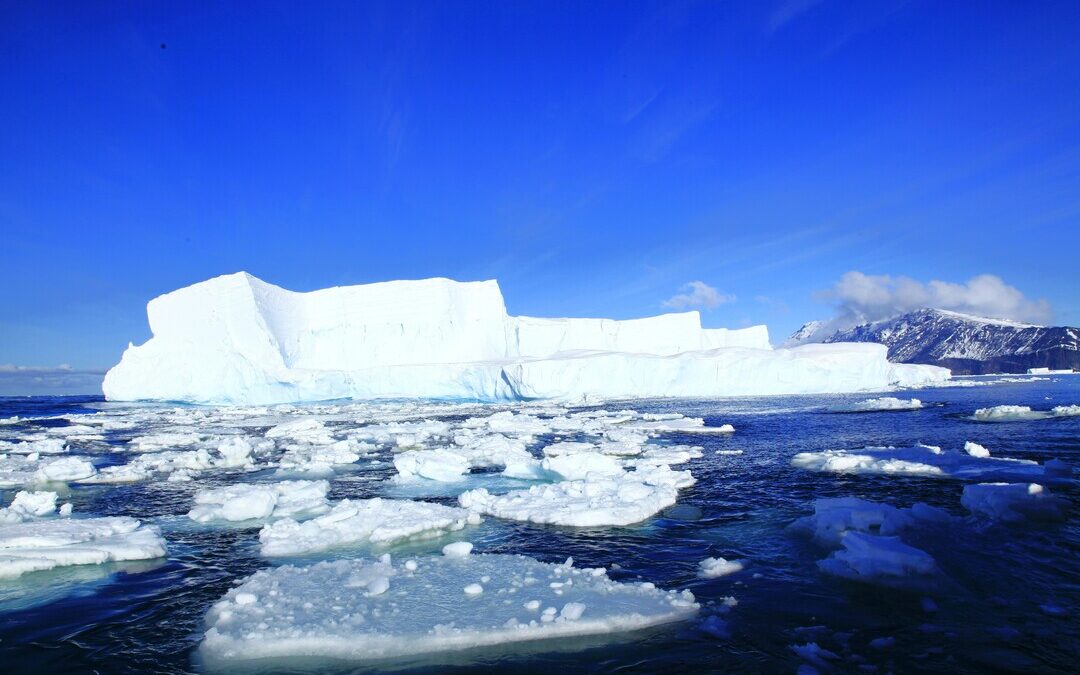World Likely to Breach 1.5°C Climate Threshold by 2029: WMO
Global temperatures are set to soar, with Arctic ice melting and 1.5°C warming likely before 2030, WMO warns.
The world is nearing a critical climate milestone, with an 86 percent likelihood that global average temperatures will exceed 1.5 degrees Celsius above pre-industrial levels for at least one year between 2025 and 2029, according to the World Meteorological Organization.
The annual WMO Global Annual to Decadal Climate Update warns that global temperatures are poised to remain at or near record highs, with every year from 2025 to 2029 projected to be between 1.2°C and 1.9°C warmer than the 1850–1900 baseline.
The probability that the five-year mean itself will surpass the 1.5°C threshold now stands at 70 percent.
“This update is yet another wake-up call that we are edging dangerously close to the lower limit of the Paris Agreement,” said WMO Secretary-General Prof. Celeste Saulo. “Temporary breaches of 1.5°C are expected, but they serve as an urgent reminder that deep, sustained emission cuts are needed.”
Last year was officially the hottest year on record, with global average near-surface temperatures reaching 1.55°C above pre-industrial levels. That record is likely to be broken again by 2029, with an 80 percent chance that at least one year in the next five will eclipse the 2024 mark.
Arctic Heat, Sea Ice Meltdown
The Arctic continues to warm at more than three times the global average. WMO forecasts show average winter temperatures in the Arctic could reach 2.4°C above the 1991–2020 average over the next five years, with significant reductions in sea-ice concentration expected in the Barents, Bering and Okhotsk seas.
September sea ice — a critical climate indicator — is projected to decline across nearly all Arctic regions, with high confidence due to skillful predictions at the ice edge. Antarctic sea ice is also likely to remain below average, particularly in the eastern Ross Sea.
Regional Extremes and Precipitation Shifts
The WMO predicts wetter-than-normal conditions for the Sahel, northern Europe, Alaska and northern Siberia between 2025 and 2029, while the Amazon basin is likely to see below-average rainfall, exacerbating concerns over deforestation and fire risk.
South Asia, barring anomalies such as 2023, is expected to face persistently wetter monsoon seasons, with an 82 percent chance of above-average rainfall between May and September. However, interannual variability means not every year will follow the trend.
El Niño Uncertainty, AMOC Watching
The tropical Pacific is expected to show mixed or neutral El Niño-Southern Oscillation, conditions, offering little clarity on whether future years will lean toward El Niño or La Niña patterns.
Meanwhile, forecasts suggest the Atlantic Multidecadal Variability will likely remain positive, maintaining elevated North Atlantic temperatures. Projections for the Atlantic Meridional Overturning Circulation, a key driver of global climate patterns, indicate a possible weakening trend; however, confidence is low due to the sparse nature of the observations.
Forecast Accuracy and Confidence
The WMO’s evaluation of past forecasts shows high reliability for global temperature predictions, with spatial correlation reaching 0.80 over the 2020–2024 period. However, confidence remains lower for precipitation and sea-level pressure forecasts, particularly at regional scales.
Despite improved forecasting skills, the WMO emphasizes that climate predictions are not definitive outcomes but scenarios with varying degrees of likelihood. The organization encourages national meteorological services to use the update to inform localized forecasts and adaptation planning.
Also Read:
World Marks 10 Years of Record-Breaking Heat as 2024 Tops Temperature Charts
Nirmal Menon
Related posts
Subscribe
Error: Contact form not found.


